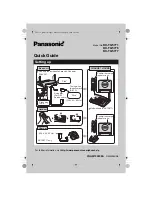
Page 8
For technical questions, please call 1-800-444-3353.
SKU 68242
c. Slide the Blade’s mounting edge into
the groove as far as it will go.
d. Tighten the Blade Clamp Screw
until Blade is secure.
e. To further support blade, loosen the Hex
Screw and adjust the Blade Support. This
will limit the chance of blade breakage.
CAUTION!
Check Blade Clamp Screw regularly;
Blade may become loose after use. Before
tightening, make sure Blade Clamp Screw is free
of sawdust. Then retighten until secure.
Operating the Jig Saw
1. Firmly hold the Jig Saw, positioning the Blade
near the work piece. Place the front edge of
the Base Plate on the surface to be cut. Align
the Saw Blade with the direction of the cut.
2. To activate the Jig Saw, press the Lock
Button. The Trigger will not activate
unless the Lock Button is pressed.
CAUTION!
Make sure the Blade Guard is
lowered over the Blade during use.
3. Press the Trigger. Allow the Saw to come up to full
speed before contacting the work piece with the blade.
IMPORTANT:
Do not start the Saw if the
Saw Blade is in contact with anything before
operation. If necessary, lift the tool from the
work piece before squeezing the Trigger.
WARNING!
Do not cut into areas where
you cannot identify any possible hazards
behind or inside the surface being cut.
4. Slowly slide the saw blade onto the
cut line to begin the cut.
NOTE:
If the blade becomes jammed in the workpiece,
turn off the tool and lift the blade away from the cut.
5. To increase the Jig Saw’s speed, apply
more pressure to the Trigger. To decrease
speed, lessen pressure on the Trigger.
6. When finished cutting, release the Trigger to stop the
tool. The Lock Button will automatically release.
7. Press Battery Button and remove the Battery Pack.
8. Clean, then store the Saw indoors
and out of children’s reach.
Metal Cutting
WARNING!
Wear ANSI-approved safety goggles and
heavy-duty work gloves whenever changing the Blade.
1. For ferrous metals, use a fine-tooth blade. Use
a coarse-tooth blade for non-ferrous metals.
2. Make sure to clamp thin sheet metals to prevent
vibration during cut. Keeping the sheet metal
clamped will also keep the sheet metal from tearing.
3. Add a couple drops of lubricant to sheet metal being
cutting. This will help reduce heat during cut.
WARNING!
Do not force the cutting blade when
thin sheet metal or sheet steel. These materials
will take longer to cut. Excessive blade force can
damage the blade and lead to personal injury.
Angle Cutting
WARNING!
Wear ANSI-approved safety goggles and
heavy-duty work gloves whenever changing the Blade.
1. The Blade must be 90 degrees to the
base plate during regular use.
2. To adjust the cutting angle, loosen the angle screw
located under the Jig Saw and behind the blade.
3. Once loosened, slide the Base Plate
forward or backward until the Base Plate’s
slot aligns with the angle screw.
4. Rotate the Base Plate to the required angle
and tighten the angle screw before use.
Maintenance and Servicing
Procedures not specifically explained
in this manual must be performed
only by a qualified technician.
TO PREVENT SERIOUS INJURY FROM
ACCIDENTAL OPERATION:
Unlock and release the Trigger and disconnect
Battery Pack before performing any inspection,
maintenance, or cleaning procedures.
TO PREVENT SERIOUS INJURY FROM TOOL FAILURE:
Do not use damaged equipment. If abnormal
noise or vibration occurs, have the problem
corrected before further use.
Cleaning, Maintenance,
and Lubrication
1.
BEFORE EACH USE,
inspect the general condition
of the tool. Check for loose hardware, misalignment
or binding of moving parts, cracked or broken






























